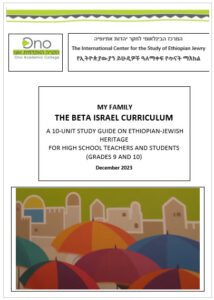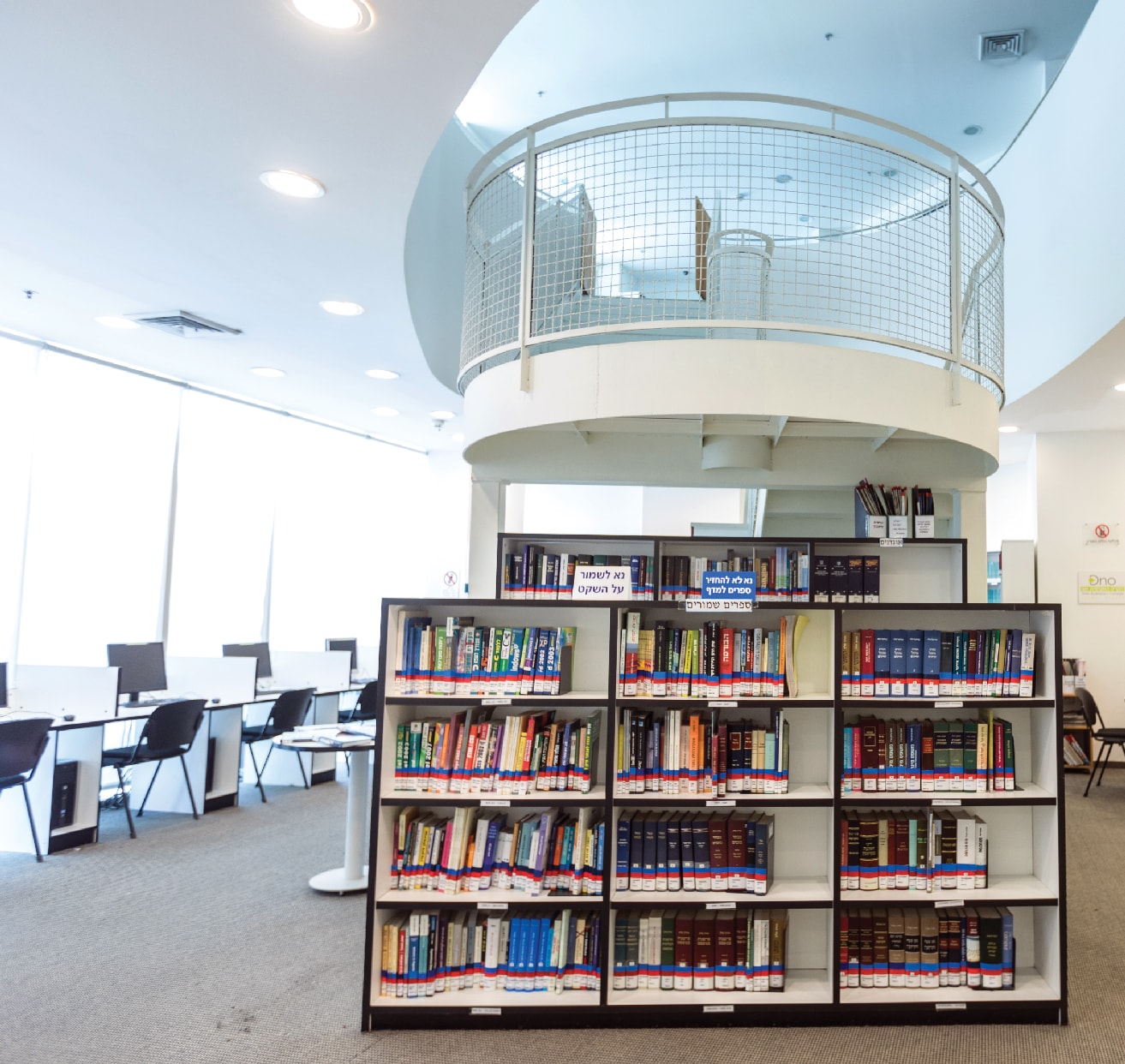
READING MY FAMILY – THE BETA ISRAEL CURRICULUM: A MESSAGE FOR JEWISH EDUCATORS
BY DR. SHARON FEIMAN-NEMSER
JACK, JOSEPH & MORTON MANDEL
PROFESSOR EMERITA OF JEWISH EDUCATION
BRANDEIS UNIVERSITY
A curriculum is more for teachers than it is for pupils. If it can’t change, move, perturb, inform teachers, it will have no effect on those whom they teach. It must be first and foremost a curriculum for teachers. If it has any effect on pupils, it will have it by virtue of having an effect on teachers.
Professor Jerome Bruner1
If a curriculum does not engage the teacher intellectually and emotionally, it is unlikely to engage the teacher’s students, says Professor Jerome Bruner, the renowned cognitive and educational psychologist.
With this in mind, Professor Bruner suggests that teachers approach every new curriculum as though students themselves: curious and open-minded, prepared to learn, ask tough questions, and even change their ideas and perspectives. It is only by taking on the mindset of an interested pupil that teachers can truly facilitate and mediate curriculum that engages students in both heart and mind.
I can say without hesitation that My Family – The Beta Israel Curriculum has the power to change, move, perturb, and inform. It did exactly that for me, impactfully. I learned about the origin of the Ethiopian Jewish community, including the traditional theory passed down through generations of descent from the Tribe of Dan.
I was awed by the persistence of the Beta Israel’s faith, and the preservation of its unique traditions over 2,500 years, despite so many challenges, and in complete isolation from rabbinic and mainstream Judaism. I was awed by the courage and resilience of Ethiopian Jews, young and old, who trekked across the African desert to fulfill their everlasting dream of reaching Jerusalem.
I was inspired by the efforts of North American Jewry and the Israeli government to rescue the Ethiopian Jewish community; it’s important for me to note that the Beta Israel’s exodus was so much more harrowing than I had ever imagined. I was perturbed by the reactions Ethiopian Jews encountered after immigrating to Israel, where their Jewish identity was suddenly questioned, and their children were required to attend state religious schools as policy, to affirm Jewish practice.
And I was particularly moved when Rabbi Dr. Sharon Shalom, founder of the International Center for the Study of Ethiopian Jewry, shared the story of his beloved grandfather, “a Jew with all his heart and might,” whose religious worship and pluralistic worldview was rooted in the essence of Ethiopian tradition. When his grandfather died, Rav Sharon imagined him sitting in heaven, surrounded by the most righteous of Jews: our forefathers Abraham, Isaac, and Jacob; Moshe and Aaron; Kings David and Solomon; and all the ancient Israelite prophets and scholars, the Tannaim and the Amoraim. This image provoked an earth-shattering conclusion for Rav Sharon, and struck a deep chord within me, too: “For the first time,” Rav Sharon revealed, “I understood that there were many channels to worshipping G-d, and all of them are equally legitimate” (Shalom, p. 104).
Rav Sharon’s story made me think of my own grandfather, Saul Kleiman, z”l, a scholar, teacher, and author, who directed a progressive Talmud Torah in Kansas City, Missouri. My grandfather’s passion for the Hebrew language led him to speak only that with my mother, earning him the nickname, “Eliezer ben Yehuda of the Midwest,” in reference to the designer of modern Hebrew. In one of my grandfather’s speeches, he stated, in humble terms: “I am not an Orthodox Jew. I am not a Conservative Jew. I am not a Reform Jew. I am a Jew.” I believe that my grandfather would share Rav Sharon’s vision of a halakhic pluralism which recognizes and validates multiple approaches to serving G-d.
This vision of Jewish pluralism undergirds the values shared in My Family – The Beta Israel Curriculum. In his introduction to this curriculum, Rav Sharon articulates how the study of Ethiopian Jewish history, culture, and theology can help promote a wider understanding that there is not one Judaism, but rather a wide spectrum of approaches for embodying Jewish tradition, halakha, and culture. My Family – The Beta Israel Curriculum was designed to help expand the bounds of our Jewish identity and promote a vision of Jewish peoplehood and Israeli society based on unity – not uniformity.
IMPLEMENTING OR ADAPTING? COVERING OR UNCOVERING?
Let’s begin with some general observations about the curriculum itself. This curriculum was designed for a very specific intended audience: teachers in the United States working in Jewish educational institutions, primarily secondary day schools and other supplementary classes. This curriculum can certainly serve as a resource for teachers in a variety of other Jewish educational contexts, including adult education and youth groups, but for now, let’s focus on high school teachers and students.
Our goal is to help educators delve into this curriculum and think of ways to adapt its lessons within their own institutional settings, considering the opportunities and constraints of their schools, and the tailored interests and needs of their students. Sometimes educators speak about “implementing” curriculum; I prefer to speak about “adapting” curriculum. I do so because an externally designed curriculum cannot automatically fit the needs and requirements of every given setting. Science educator David Hawkins was fond of saying that a teacher’s job is not to “cover the curriculum” but rather to “uncover the curriculum.”
This stance seems compatible with the intentions of those who helped to bring My Family – The Beta Israel Curriculum into fruition. While this curriculum provides a conceptual structure, along with units and lesson plans for a 10-week course of study, teachers are also invited to “discover the existential opportunity” of Ethiopian Jewry’s unique story and use their “personal creativity in mediating this captivating tale” (Peri, p. 171).
First, it’s important to recognize that this curriculum is shared from the perspective of those from within or close to the Beta Israel community. This “insider” awareness is especially apparent in the way that the stories and interpretations are presented. For example, Ethiopian Jewry’s preference to share its traditional origin theory, which tells of descent from the Tribe of Dan. Another example is the community’s decision to refer to itself as “Beta Israel,” rather than “Falasha” — the latter an increasingly derogatory term imposed by outsiders, literally translated as “exiled.” The “insider” perspective is primarily reflected in the curriculum’s sensitivity to how the Ethiopian Jewish community perceives itself, as “a living repository of authentic pre-Talmudic Judaism” (Shalom, p. 41).
Second, while this curriculum is rich in content and information – many of its lessons require substantive explanation by teachers – its purpose is not just to transmit knowledge about the Beta Israel, but rather to transform the learner’s sense of Jewish identity and self. The very title, My Family – The Beta Israel Curriculum, is intended to underscore that Jews are all part of one family. As told by the curriculum designers themselves: “The purpose of this curriculum is to get to know your family and learn about the traditions, laws and values of Beta Israel.” The curriculum designers hope that American Jewish youth will not only come to see Ethiopian Jewish Israelis as part of the broader mosaic of the Jewish people, but that they will also learn to “include their African Jewish sisters and brothers in their inner world.”
Third, this curriculum will likely resonate most strongly among American Jews. We live in an increasingly multicultural society, where we struggle with ongoing challenges of diversity, equity, and inclusivity, and are often asked to consider our Jewish communal and individual responses to such issues. This curriculum offers Jewish communities an excellent opportunity to deepen our understanding and acceptance of diversity and accessibility, within the broader societal context and legacy of race relations, equality, privilege, and opportunity.
THE COMMONPLACES OF EDUCATION
Every academic situation involves the interaction of four core elements, or commonplaces, of education: content, learning, pedagogy, and context. Teaching is not simply what teachers do; rather teaching is what teachers do with particular students, around particular content, and in a particular context. It follows that curriculum rests on assumptions, implicit or explicit, about the building blocks. One way to read My Family – The Beta Israel Curriculum is through the lens of the four commonplaces of education.
CONTENT AND CONCEPTUALIZATION
My Family – The Beta Israel Curriculum is divided into four comprehensive sections: (I) The History of the Beta Israel; (II) “The Jewish Life of the Beta Israel; (III) The Journey Home; and (IV) Life in Israel. Each section comprises various units (a total of 10) which are then broken down into sub-topics and applied lessons. For example, “The Jewish Life of the Beta Israel” covers the sub-topics: “Hopes & Prayers,” “Philosophy & Values,” and “Laws & Customs.” The section entitled “The Journey Home” addresses the following sub-topics: “Attempted Journeys,” “Outreach to the Beta Israel,” and “Operation Moses & Operation Solomon.” Topics are developed through individual lesson plans, each of which is intended to take about an hour, but this timeframe is flexible and can be adjusted accordingly within schools.
So, what is worth knowing? This is a question all educators must consider when deciding what information to share with their students. Choosing worthwhile content, and then organizing the information in meaningful ways, is one of the most substantial intellectual tasks of teaching. Expertise on a subject certainly gives teachers material to draw from but knowing a lot about a particular subject is different from knowing what should be taught – or learned.
The designers of this curriculum have provided teachers with an invaluable intellectual service by conceptualizing extensive information about Ethiopian Jewry and then organizing the content into meaningful sections, units, and lesson plans. (See the Table of Contents on pp. 3-6 and the Conceptual Map on p. 40). This curriculum is heavily based on topics from Rabbi Dr. Sharon Shalom’s comprehensive book, From Sinai to Ethiopia, an incomparable resource for any teacher or student interested in learning about Ethiopian Jewish heritage and history.
LEARNING AND LEARNERS
The curriculum is designed for students in grades 9 and 10, who are considered capable learners. The curriculum views learning as an active process of comprehending and assessing content. Each unit begins with a “starter” activity, often in the form of a question or thought experiment. This style is designed to activate students’ minds and encourage them to reflect on their own experiences and beliefs, as it prepares them to absorb new information and ideas and to imagine fresh possibilities.
This modality reflects a constructivist approach to education, which allows learners to make sense of new concepts in accordance with familiar terms and beliefs. Once learners are confronted with theories or facts that challenge their own understandings or preconceived notions, they must then reframe their perspectives, and re-examine ideas from within the context of the unfamiliar, and often surprising, new information presented to them. Considering the underlying perspective of a curriculum is a central aspect of teaching. As noted above, we often think of teachers as experts on a given subject, transmitters of information to students. It is certainly true that every curriculum demands a level of expertise from teachers. But more importantly, the teacher must be able to facilitate and mediate the students’ learning process – how their pupils absorb and comprehend rich, complex, unfamiliar, and often startling content.
To do this, teachers must pay attention to how students make sense of content – what they understand and what they find puzzling or confusing. In the words of John Dewey, father of progressive education, teachers themselves must be students of “mind activity,” capable of seeing and relating to the learning process underway in the minds of their pupils.2
PEDAGOGY AND PRACTICE
This brings us to the third commonplace of education: Pedagogy, or the very practice of teaching. I have already mentioned the “starter” activities intended to kick off each unit of this curriculum; in most cases these “thought experiments” and exercises provide a focused framework for the lessons that follow. Sometimes teachers ask students to revisit their answers, and think back to the original question or exercise, as a way of marking the development of their observations and comprehension.
For instance, in Unit 8: Operation Moses & Operation Solomon, students are asked to rank, in order of priority, a list of factors that were crucial to helping the Beta Israel immigrate to Israel. Such factors include the community’s desire to return to the Jewish homeland; political will in Ethiopia, the United States, and Israel; as well as financial concerns, logistics, the welfare of Ethiopian Jewry, and the efforts of lobbyist and advocacy groups. Students are asked to revisit this list three times as they learn more about the timeline and events of Ethiopian Jewish history, including progress and setbacks throughout the years.
Another striking feature of this curriculum’s recommended pedagogy is its use of primary and secondary sources, which invite students to study and interpret information with a certain level of intimacy. Sources include Biblical texts, excerpts from Rav Sharon’s book From Sinai to Ethiopia, inspirational messages about hope, geographic and conceptual maps, photographs, prayers, personal stories, and more. Students study the sources with the framework of a question in mind. The curriculum sometimes recommends possible ways that the students might respond, and in all cases, provides the teacher with groundwork to position and explain the sources under study.
Examining the pedagogy of this curriculum, I was reminded of the special opportunity I had to meet and interact with Rav Sharon in 2017, when he worked for a semester as a post-doctoral fellow at Brandeis University. While Rav Sharon was based at the Schusterman Center for Israel Studies, he also spent time at the Mandel Center for Studies in Jewish Education, where I served as director at the time. We arranged a consultation with local Jewish educators and Center researchers, during which Rav Sharon shared his inspiring personal story and vision of creating a curriculum to teach American teens about Ethiopian Jewry.
Together, we explored the following questions: (a) Who is the audience for such an initiative? (b) What are different ways to tell the story of Ethiopian Jewry? (c) How could teaching about Ethiopian Jewry fit into the educational agenda of Jewish day schools, supplementary classes, summer camps, and other educational frameworks? And (d) What are different strategies for introducing this story to an American audience?
Rav Sharon and I also met several times with two outstanding Jewish day school history teachers, to explore different pedagogical models. These master teachers strongly recommended the use of artifact-based approaches to teaching and learning, which invite students to engage with big ideas and endure questions through the investigation of primary sources and other cultural objects of interest. We examined artifact-based curricula and discussed ways to design inquiries related to specific aspects of Ethiopian Jewish history, culture, and halakha. We debated the pros and cons of developing a complete curriculum versus creating an annotated sourcebook with historic documents, folktales, poetry, photographs, personal testimonies, and maps, accompanied by suggestions about how teachers might use these materials as a starting point for student investigation. I am delighted to see evidence of these conversations in the curriculum’s embrace of active learning, including its use of texts and artifacts, inclusion of personal, stories and the invitation to teachers to adapt this curriculum to their own students’ needs and contexts.
CONTEXT AND EXPLORATION
In our conversations at Brandeis University, we were also able to acknowledge the challenges of introducing new curriculum into existing educational programs, which are already strapped for time. Jewish day schools teach a dual curriculum of both Jewish and secular subjects in a single day; supplementary schools meet for relatively few hours a week. In both settings, time is short, and tasks are long. This understanding led us to consider how our new content might relate to issues, topics, or questions that teachers have already committed to and provide a fresh and compelling case for further exploration.
ETHIOPIAN JEWRY AS A CASE STUDY
Can Ethiopian Jewry be seen as a case study, and if so, of what? This question highlights some of the topics, issues, and inquiries that can be explored and enriched through the materials of this curriculum. This approach takes into consideration the reality that Jewish educational programs and institutions must balance many competing priorities and may be hard pressed to make room for a new 10-week course of study. One alternative is to use the rich materials in this curriculum to expand or extend on certain themes or topics of an existing curriculum. The story of the Ethiopian Jewish community, past, present, and future, can be framed in different ways and taught for different purposes. Below I offer a few examples, some of which arose in our Brandeis consultations with Rav Sharon. My goal here is to suggest new possibilities for teaching these materials and stimulate others to generate their own ideas and connections, so that more Jewish students will have the opportunity to know and treasure this remarkable story.
The story of Ethiopian Jewry can support study of big questions including, “who is a Jew” and, further, “who should decide what it means to be a Jew?” In his book, From Sinai to Ethiopia, Rav Sharon introduces the idea of halakhic pluralism by asking: “If a Jewish community was disconnected from the Jewish people and was not party to the halakha (law) decided by the majority, should it be required to accept the majority halakha?”3
The question, “who is a Jew?” allows for deeper exploration of issues such as race and racism, topics that are already quite charged for Jewish educators. Many American Jews grow up with a societal bias, rooted in majority culture, that all Jews are “white,” although this is clearly not the case, as evident by the diversity within our communities. Ashkenazi Jews are but one part of a larger mosaic of global Jewry and the color of our skin is irrelevant to our Jewish identity. As we help young people develop a sense of kinship with their fellow Jews, it is essential that we underscore this message. The events of the past year have brought a resurgence of attention to issues of race, diversity, and privilege, and to the various ways Jewish educators might confront deep questions about these matters. Jewish educators in the U.S. grapple ways of teaching history that includes the narratives of Blacks and Native Americans.
Further, they need to consider how to discuss elements of Jewish identity, within the context of racial relations and the diversity of our own communities. In this challenging endeavor, the story of Ethiopian Jews in Israel can broaden perspectives on Jewish peoplehood, and shed light on the intersection of race, religion, and ethnicity. Another theme to explore through the case study of Ethiopian Jewry is that of social activism: teachers can highlight the ways that American and Israeli Jews mobilized to rescue the Beta Israel during the Ethiopian Civil War of the 1970s through early 1990s. The Beta Israel curriculum tells this story in Section III – The Journey Home. One way of exploring this theme is asking students, “who is the hero of this story?”
One more strong example for exploration is the theme of immigration. The experience of migrating from one culture to another is a universal experience, with personal resonance for American Jews who are, by and large, either immigrants themselves, or the children, grandchildren, and great-grandchildren of earlier immigrants. Studying story of Ethiopian Jewry’s immigration to Israel – including different generational experiences – might help Jewish teens today think about the American Jewish immigration experience and residual effects in more nuanced and deeper ways.
Teachers might choose to convey this curriculum as a whole syllabus, or they might decide to focus on specific units or material to expand on lessons already underway in their classes. Either way, the first step for teachers must be to study My Family – The Beta Israel Curriculum preferably in chevruta (partnership) with colleagues.
Let the story of Ethiopian Jewry change, move, perturb, and inform you – and then share your own questions, responses, and insights with your fellow educators. And I urge you to accept the invitation of Dr. Chaim Peri, long-time director of the Yemin Orde Youth Village in Israel, where so many Ethiopian Israeli youth found a home, family, and future. In the words of Dr. Peri, “Make the leap with (y)our students, broaden (y)our self-perception as Jews and human beings, open up to a new Jewish angle and even retell the Jewish story.”
SHARON FEIMAN-NEMSER
JACK, JOSEPH & MORTON MANDEL PROFESSOR EMERITA OF JEWISH EDUCATION
BRANDEIS UNIVERSITY, USA
1 Jerome Bruner, The Process of Education, (Cambridge, MA: Harvard University Press, 1977).
2 John Dewey, The Relation of Theory and Practice in Education (1904/1965). In R.D. Archambault, John Dewey on Education (Ed.), Chicago: University of Chicago Press.
3 Rabbi Dr. Sharon Shalom, quoting Rabbi Dr. Yehuda Brandes, in From Sinai to Ethiopia, (Gefen Publishing House, 2016), p. xxi. Learning about the religious history of Ethiopian Jewry is an invitation to decenter from rabbinic Judaism and allow for the legitimacy of Ethiopian Jewish tradition, which Rav Sharon refers to as “two poles of Judaism with different traditions and equal spiritual meaning.”







